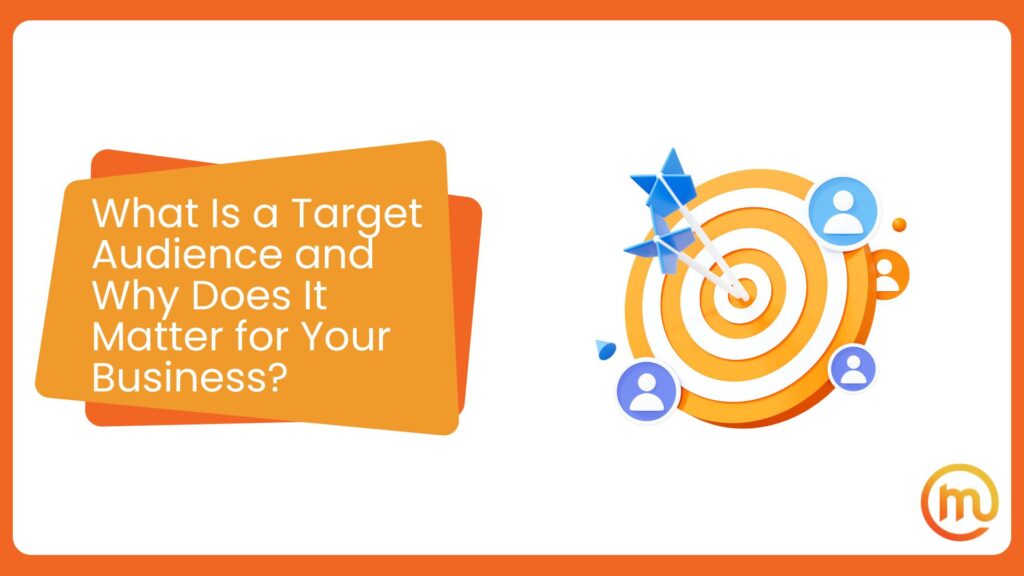If you’re trying to become familiar with the basic digital advertising terms, you have likely heard about the target audience – but do you understand what the term means? What is a target audience for a business, and why is it so important in marketing? In this blog post, we will dive into this topic and explain how to find your target audience and boost your advertising efforts.
What Is a Target Audience?
Whether you’re a huge corporation or a small business that’s just starting to advertise its products or services, knowing to whom to direct your marketing efforts is crucial to your success. If you try to market to everyone, you’ll end up selling to no one – every experienced marketer can confirm this is true. Before you dive into creating brilliant marketing strategies, you must figure out who to direct them to.
Who is the intended audience that will engage with your content and turn from a reader into a customer? That’s what a target audience represents. In other words, a target audience is a group of consumers you want to reach – these are people who will benefit from the product you’re trying to sell. We can divide them into subgroups based on their characteristics, such as demographics and consumer behavior – and get specific buyer personas.
Target Audience vs. Target Market – What’s the Difference?
When talking about target audiences, the term target market is often mentioned, but these aren’t synonymous. Let’s take a look at their differences. The target market represents the set of consumers that the company wants to sell to. It sounds the same as the target audience, but here’s the catch – you don’t advertise to the entire target market. The segment of the target market that you focus your advertising efforts on is actually the target audience.
For example, let’s say you have a website development agency. Your target market is everyone who needs a website, in other words, small businesses. But you won’t advertise to everyone within this group. Maybe you’ll focus your marketing on small business owners of a certain age – those who are less likely to design their websites on their own. They will represent a target audience in this example.

Types of Target Audiences
We’ve mentioned that your target audience can be divided into subgroups based on certain characteristics. From these subgroups, we can conduct customer profiling and create buyer personas, so this form of market segmentation is quite important. These subgroups serve as types of target audiences – so here are the types that you need to know about.
Demographics – A Common Factor for Segmenting a Target Audience
You have likely heard about this before, even if you didn’t realize it’s a type of target audience. When doing a target audience analysis, marketers will commonly use demographic factors such as age, gender, or location. We can say this is a starting point when dividing your audience into groups – demographics is one of the most essential things to consider.
Target market demographics are quite simple – a young person will have different consumer needs than an old one, somebody from the East Coast will have different preferences than someone from the Midwest, and so on. It’s also worth mentioning that different demographic groups prefer different advertising channels. This is especially important for a social media marketing agency that has to curate content for, let’s say, TikTok and Instagram channels – TikTok will appeal more to Gen Z, while Instagram is more suited for Millennials.
Subculture – Consumers Who Share a Common Interest
There is a vast number of different subcultures out there – some will be interested in your product, and some won’t. Obviously, you will focus on those who do, but here’s a little trick. Even if you think that your product can’t catch the attention of a certain subculture, there might be social media marketing trends that you can leverage to speak to that subculture specifically. It’s just a matter of creativity!
Purchase Intention – Segmenting an Audience Based on Where They Are on the Purchase Timeline
Not all consumers are equally close to purchasing your product. Some have barely heard about it, while others have been contemplating a purchase for months. This is common with more expensive products and services – a purchase timeline can be quite lengthy.
It makes sense that you won’t advertise to every potential buyer in the same way. This is one of the moments in advertising where your creativity has to be mixed with psychology so you can push every buyer toward the purchase, no matter where they are along the purchase timeline.
Psychographics – Characteristics That Motivate People to Buy
Psychographics divide a target audience based on their values, beliefs, or interests. It’s easy to see how these can determine our motivations to buy something, as they determine our needs or challenges that can be overcome with a product or service. About 21% of consumers follow brands whose missions and values align with their own. This is especially important for younger demographics. Psychographic data can be used to forge a connection with consumers and improve brand loyalty.
Lifestyle – The Income of Your Target Audience Affects Your Advertising Approaches
When it comes to lifestyle, we can look at different characteristics, but what’s most important in the context of target audiences is income – that’s what determines a buyer’s spending habits and spending power. This might not be significant for brands that sell less expensive, everyday products, but for those who offer premium products or services, understanding spending habits can be a key to proper consumer targeting.

What Are the Benefits of Knowing Who Your Target Audience Is?
Identifying a customer base can provide you with a wealth of information and an endless stream of data and analytics to sort through. Now, you may be wondering – what’s the point of that? What do you get by understanding who to target your advertising to? Yes, you can improve your strategies, but what does that translate to in the long run? Here are the three main benefits you will get if you figure out how to identify a target audience for your brand.
Increasing Your ROI
If you’re a digital advertising agency, ROI (return on investment) is what determines everything – it shows you the consequences of your efforts. In other words, ROI shows how efficient your marketing strategy is. If you know your target audience, you will be able to take your marketing in the right direction, and you will be rewarded with an increase in ROI, especially in social media advertising.
Developing a Brand Voice and Brand Loyalty
When you know who you’re speaking to, it’s easier to find the right voice for your brand. You understand what your customers want to hear, what questions they want answered, and you can easily figure out how to approach them. This can help you create a better connection and make your brand seem authentic. In no time, you will see how much good that can do to strengthen your brand and get you a lot of loyal customers.
Standing Out From the Competition in the Digital World
Defining your target audience helps you define your competitors as well. When you know who you’re up against, you can conduct a competitive analysis of marketing strategies. Explore what your competitors are doing – how efficient are their marketing strategies? Are they doing something better compared to you? Can you improve to gain an advantage over them? Maybe you can even spot advertising opportunities they overlooked and turn them into authentic marketing that will ensure your brand stands out.

How to Define Your Target Audience?
How to define a target audience? The point is to gather data on your customers and, with the help of an experienced online advertising agency, define the target audience so you can come up with an advertising strategy that speaks to them. You will have to implement some market research techniques. Market research allows you to uncover the pain points of your customers, what they’re searching for, and what problems they need to solve.
Listen to what the customers are telling you – reviews and surveys can reveal a lot. Don’t overlook the importance of data you can gather from your social media channels. Comments on social media are a gold mine – focus on questions that are repeating, critiques, and praises from users. You can also look beyond the posts to find out what potential consumers are saying about your brand on social media channels in general. It might give you an interesting insight into what you need to improve or adjust in your advertising.
Is There a Downside to Focusing on Target Audiences?
Target audience is a great thing, but being hyper-focused on it does have its downsides. Here’s what we mean by that. If you focus all your attention on a target audience, you may rob yourself of new opportunities. That’s why it’s helpful to always stay open-minded, especially for brands that want to reinvent themselves.
Having a glow-up as a brand means changing your marketing strategies drastically, and this can include changes in your target audience. Additionally, consider the possibility that certain products your brand offers can have slightly different audiences than the rest. If you’re focused solely on one audience, you may overlook an opportunity.

Why Struggle on Your Own? Hire a Digital Content Agency That Will Help You Find Your Audience
By now, you surely understand how important knowing your audience is for your success in the digital world. However, many small businesses will find it difficult to define their target audiences on their own. We’re here to tell you that you shouldn’t struggle with that task alone – our content strategy agency, Made Online, can help you.
Let’s work on identifying your ideal customers and curating the perfect advertising strategy for your business goals. Are you ready to embark on this exciting digital journey? Contact us today and schedule an audit so we can get started on improving your digital presence.

